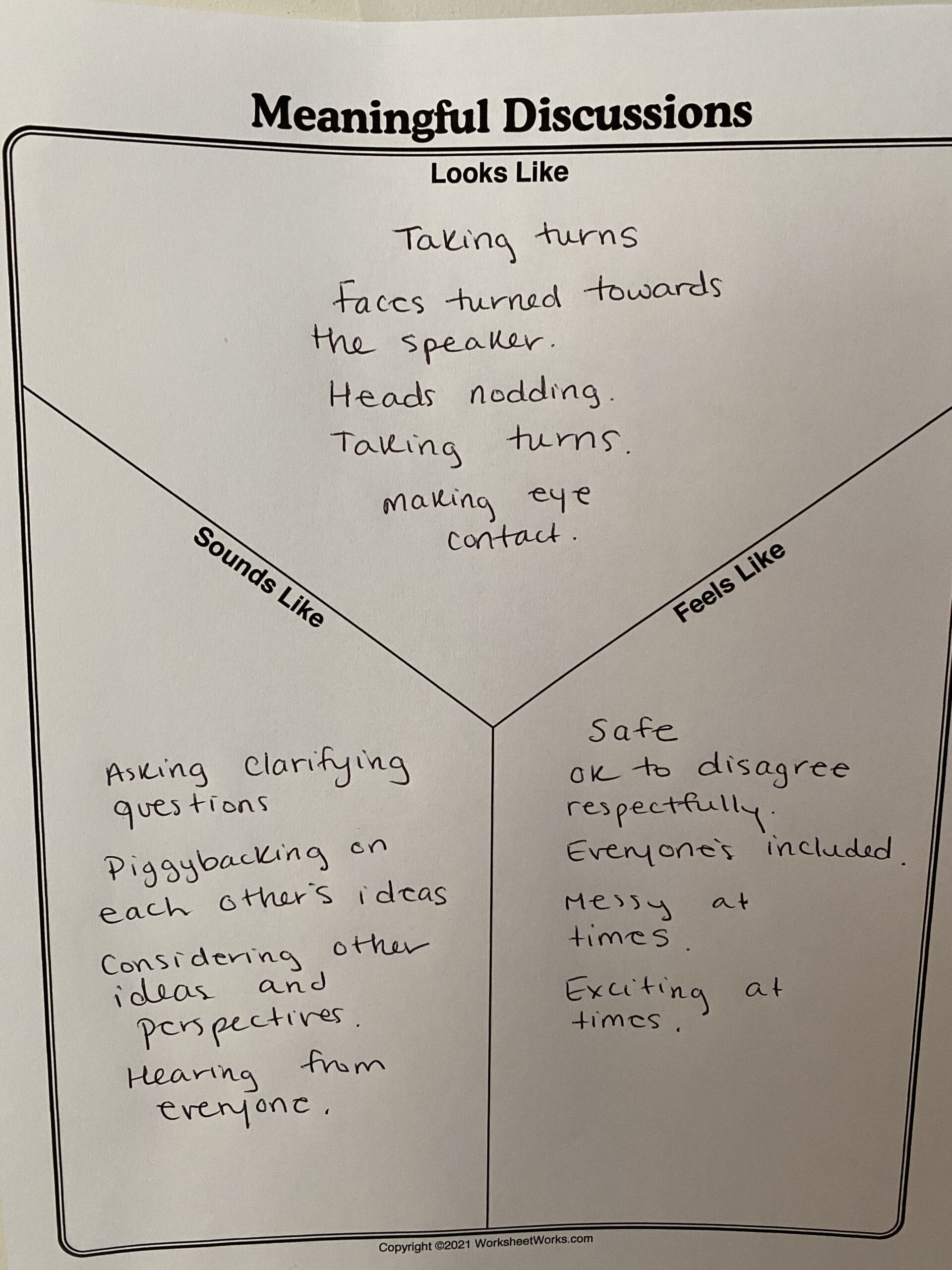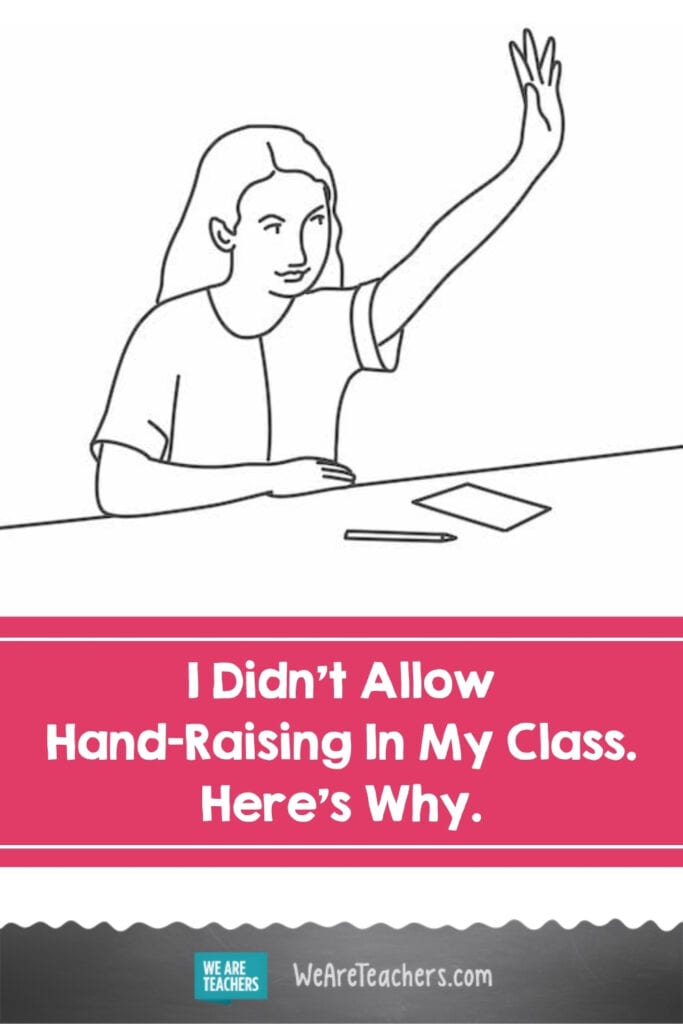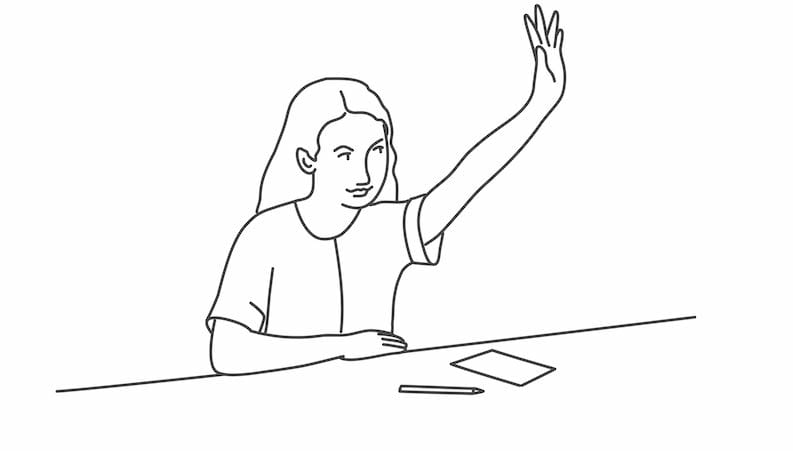There is nothing more maddening for an English teacher (except maybe grammar mistakes) than a student discussion where no actual discussion takes place. You know what I’m talking about. One student raises their hand the entire time. A student shares. Silence. More waving hands. Then, a student says something unrelated to the previous comment or the topic. It’s painful. And it is not a discussion! Have you ever seen adults raise their hands at a book club, a work meeting, or the dinner table? No. So why do we teach students to raise their hands? Especially during discussions? It wasn’t working. So I tried something different. I didn’t allow hand-raising in my class. Here’s why and what happened next.
The Lie: When they come to class, students know how to have a discussion.
The Truth: Our students need us to teach them how to have a discussion.
We make a lot of assumptions about our students. We say things to the teacher down the hall like, “I thought they learned that last year?” Shouldn’t middle school students know how to have a discussion? I thought so. I was wrong. The turning point came when one afternoon, a student came by after school. She shared, “when you say we are going to discuss the reading, I am not sure what you mean or what I am supposed to do.” It was an “ah-ha” moment. I was asking my students to do something that I hadn’t taught them myself. It’s like I told them to make dinner but didn’t give them a recipe.
After that, I changed the way I taught English. Before we discussed literary devices, character development, and why an author might use a flashback, I needed to teach how to listen, build on each other’s ideas, ask clarifying questions, and respectfully disagree.
[contextly_auto_sidebar]
The Lie: Students leave school ready for the “real world.”
The Truth: School can prepare students for what’s next, but our culture has to shift.
I might get into a bit of trouble for this one. But I don’t actually think that what we teach is most important. I believe that how we teach it is what matters most. How to have a discussion becomes much more important than whether we should read To Kill a Mockingbird or Romeo and Juliet. At first, it was really uncomfortable. They had to “unlearn” a lot. My students were so conditioned to raise their hands that when I asked them to stop, they couldn’t. So I scaffolded the process. We used a tennis ball. The student who was speaking had the ball, and then they had to “read the room” and their classmates’ body language before they tossed the ball to someone else. I showed them videos of conversations and asked them to describe what a discussion looks like and sounds like. Together we began to co-create a set of criteria for a meaningful discussion. Here’s what we came up with:

We used this co-created criteria anytime we got stuck. It was really hard. There were so many times when they asked if we could just go back to raising hands. They didn’t know what to do. So I would pause and remind them that, like anything else, learning something new and doing things differently takes time. There were so many times that I second-guessed myself. Was I wasting time? We weren’t getting through the curriculum as quickly as we normally did. A lot of my colleagues were supportive, but others felt threatened by this choice. It was the same with parents. Some got it. Others didn’t. Maybe this is why change in schools is so rare, I thought. We are so afraid of trying something new that we keep doing the same things even when they aren’t working.
The Lie: We ask students to raise their hands to teach them patience and how to take turns.
The Truth: We are afraid that if students don’t raise their hands, we will lose control of our classrooms.
A professor once told me, don’t smile until Christmas. So many of my teacher training courses focused on classroom management, routines, and procedures. I am not arguing that this isn’t important. You have more time to teach if your students know where and how to hand in assignments and what to do when they need to leave class and go to the bathroom. The line between classroom management and control was always blurry for me. And no matter how many rules I had in my class, don’t smile until Christmas never worked.
I came to realize that routines and procedures worked better when I co-created them with my students. See if we tell our students what to do, they don’t think for themselves. And how can we possibly expect students to have a discussion if they don’t know how to think for themselves? Asking them to raise their hands does nothing but limit how they can take part in class. We have all had students who felt too shy or uncomfortable to raise their hands. We’ve also had kids who are so worried about when they will get called on that they don’t actually listen to us or anyone else. I am interested in teaching my students how to take control of their learning, how to own it rather for themselves rather than doing it for them. Losing control of the classroom isn’t always a bad thing. It’s not my job to tell my students what to do. It’s my job to teach them.
The Lie: If students are uncomfortable or struggling, we have to make it easier or fix it.
The Truth: Students will learn to think for themselves and develop confidence and resilience when they struggle.
When I stopped trying to control the discussion and turned it over to my students, I found they struggled, but it was a productive struggle. I wasn’t there to tell them what to do or give them permission to speak. They had to figure it out as they went along. They had to take chances. And as the year went on, I saw my students learn something so much more valuable than what a simile is or how to use a semicolon properly. They were learning how to listen and talk to each other without being told how to. They were developing confidence and resilience. I could sit alongside them and take part rather than control. They stopped turning to me and started turning to each other.
How do you teach students discussion skills? Share in the comments.
Want more articles like this? Make sure to sign up for our newsletters.


